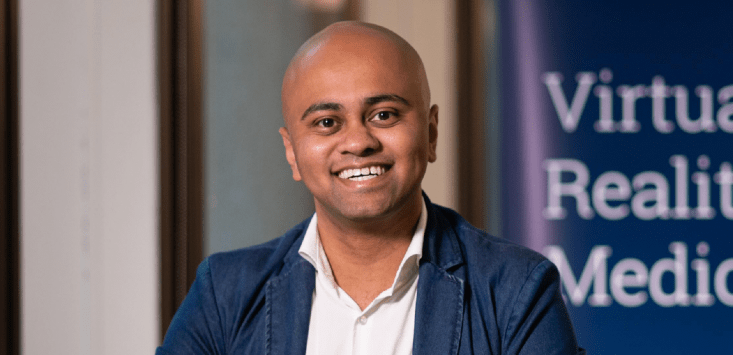
As Albert Einstein once said: “In the midst of every crisis, lies great opportunity”.
The past 12 months have seen an unprecedented global health crisis that has put healthcare systems under incredible pressure with, in some countries, no sign of easing any time soon.
Yes, the pandemic has created a time of great uncertainty, but it has also presented an opportunity for innovators, clinicians and key decision makers to embrace and encourage the digitalisation of the medical industry.
The opportunity? To change the paradigm by which things are done. This starts with future-proofing education and training, to deliver the best outcomes for patients and, ultimately, save lives.
In recent years, health and tech leaders have been working tirelessly on the growth of virtual medical services, digital initiatives, artificial intelligence and virtual reality technology, with clinicians lobbying for more funding for health systems to deploy more in technology investment and training.
COVID-19 has accelerated the conversation and placed a need on initiatives previously hampered by lack of funding, procurement barriers or budget constraints, with the value of innovative tech solutions now finally being realised.
Perhaps one of the most well-known forms of digitalisation is the introduction of telehealth, which is an example of digitalisation done well.
In April 2020, the federal government announced that more than 4.3 million health and medical services had — by that time — been delivered to a total of more than 3 million patients through the telehealth items introduced by the federal government for the COVID-19 pandemic.
The use of telehealth instead of face-to-face consultations helped to stop the spread of the virus, protecting both patients and frontline health professionals, and saving lives.
Since then, we have seen a rise in virtual care, AI chatbots determining patient risk, digital care assistants, remote patient health tracking and more.
We have also seen virtual reality companies working with hospitals at the peak of the pandemic to train staff in key skills required on the front line, such as how to use PPE safely, how to navigate unfamiliar intensive care wards, how to engage with patients and their families, and how to use important equipment like ventilators.
Such technology offers the ability to provide training quickly and at scale — both imperative against the changing face of a pandemic we continue to battle against.
Pandemic aside, other life-saving procedures must still be performed, and virtual reality training offers both senior clinicians and trainees the opportunity to maintain their education and training safely, outside of bustling wards.
Not only does virtual reality training offer clinicians a way to fast-track skills training, it also brings with it a reduction in medical error. This equates to health economic gains (hospitals save substantial amounts of money due to decrease in hospital stay and associated spending), and human gains in terms of lives saved and improved outcomes.
This seems to be the broader global trend, where a recent survey conducted by L.E.K Consulting found that 65% of hospitals in the APAC region are increasing spending on digitalisation. These hospitals plan on this increase within the next three years, to minimise medical errors and raise patient satisfaction, showing APAC hospitals’ priorities and how they have adapted during COVID-19.
Australia’s home-grown technology is starting to be recognised on the global stage, and I hope this will lead to international scalability and thousands of additional lives saved.
As the medical world (and patients and astute healthcare stakeholders, for that matter) continue to realise the immeasurable benefits of innovative technology, I am excited by the positives we have been able to achieve from a terrible crisis.
While the immediate gains are obvious, there is no doubt that more profound advantages will be realised in the future. The digitalisation of the medical industry is just taking shape and I am very optimistic of the journey ahead.
Handpicked for you

Budget 2021: $206.4 million ‘patent box’ scheme to encourage medtech and biotech investment



COMMENTS
SmartCompany is committed to hosting lively discussions. Help us keep the conversation useful, interesting and welcoming. We aim to publish comments quickly in the interest of promoting robust conversation, but we’re a small team and we deploy filters to protect against legal risk. Occasionally your comment may be held up while it is being reviewed, but we’re working as fast as we can to keep the conversation rolling.
The SmartCompany comment section is members-only content. Please subscribe to leave a comment.
The SmartCompany comment section is members-only content. Please login to leave a comment.